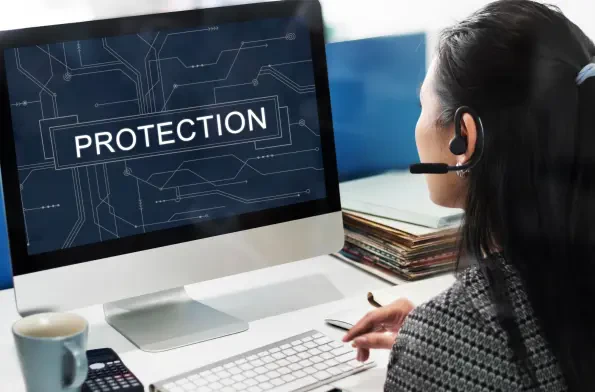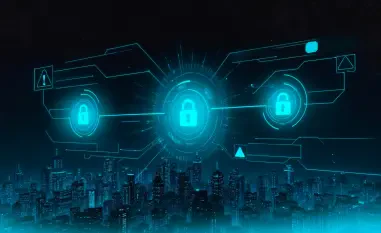Listen to the Article
The digital environment is volatile. It requires companies to fortify their software and stay vigilant. Threat assessments are a step toward safeguarding IT systems and software. By combining manual and automated processes, organizations can maintain defenses against attackers and mitigate risk.
This article provides an overview of vulnerability, including its benefits and the different types. You’ll also learn the critical signs an organization needs an assessment.
What You Need to Know: Vulnerability Evaluations Overview
Scanning for threats is essentially a routine health check for cybersecurity. It involves evaluating networks and IT systems for vulnerabilities, flaws, or weaknesses that external and internal attackers can exploit. This process often depends on automated and manual approaches to provide extensive coverage for varying degrees of severity.
Organizations typically perform these threat tests as the first line of defense within a more comprehensive vulnerability management lifecycle. Each assessment may target different layers of technology and software, which is why many types are available to use. By prioritizing these tests, companies can detect suspicious system activity before it becomes an opportunity for attackers.
The Benefits
Conducting routine scans is beneficial for all enterprises, especially those that invest in e-commerce or online exchanges. This approach allows B2B companies to:
Prevent software compromises: Threat assessments can equip your business with the necessary and timely information to identify software vulnerabilities. Early detection enables your IT teams to support their infrastructure and arm themselves before compromises happen.
Manage risk efficiently: Taking a proactive approach to running tests helps with risk mitigation. With detailed reports on vulnerabilities and their degree of severity in hand, you can prioritize safety and minimize data breaches. Efficiently managing damage means your company can allocate resources according to a relevant need, allowing them to address critical suspicion first to reduce overall exposure to cybercrime.
Adherence to regulations: Industry regulations mandate businesses to run frequent risk assessments. By using threat tests, you can demonstrate compliance with these requirements. At the same time, your organization can avoid potential fines and legal penalties for noncompliance.
Save time, resources, and costs: Vulnerability scanning is a cost and resource-saving strategy, especially when it is automated. Integrating automation enables you to shorten the time and effort it takes to run manual evaluations. Equally, it streamlines security operations and reduces the potential of cyberattack incidents—translating to lower expenses.
Improve protective measures: Regular scans will allow your team to maintain strong data protection protocols, which leads to improved security and an enhanced reputation. By continuously monitoring vulnerabilities, your business maintains operational integrity and stays ahead of attackers.
Common Types
To uphold security standards, it is important for organizations to run scans regularly. Unlike traditional scans that are done periodically, continuous monitoring tools—including Application Performance Monitoring and Security Information and Event Management systems—run constantly to provide real-time threat detection.
With that in mind, there are many approaches available for your organization to use as part of its assessment strategy, including:
Credential scans: These evaluations necessitate the use of privileged credentials of an authorized user. This form of access enables IT professionals to navigate systems based on the logged-in user’s perspective. Credential scans provide insight into what hackers could do with a compromised account and how an insider threat would navigate it. This approach allows you to use in-depth analysis to offer highly accurate results.
Noncredential scans: Alternatively, you can conduct scans without using privileged information to imitate an outsider invasion. These assessments are less detailed, but they are useful for determining system weaknesses that unauthorized attackers could exploit.
Compliance checks: The primary focus of compliance scans is to run system checks against specific frameworks and regulatory expectations, including HIPAA and the General Data Protection Regulation. These checks ensure that all organizations meet security-related industry requirements and compliance guidelines.
Cloud threat assessments: Infrastructure as a Service, Platform as a Service, and Software as a Service are among the most vulnerable environments. Scanning them for misconfigurations, weak APIs, and other cloud-native threats helps boost operational security.
Does Your Organization Need An Assessment?
System weaknesses can be caused by bugs in code or flaws in software design, creating points of entry for attackers to exploit. Your company cannot afford to have this gap in security because it leads to a loss of internal controls that are costly and can undermine a longstanding reputation.
You can get ahead of intruders by recognizing when you need to run a threat test. Here are four signs of vulnerability that you can look out for:
Old-fashioned systems: Legacy software is an easy target for attackers. When systems are outdated, hackers can use their advanced security knowledge to gain access. It is important to guard against invasions by updating software and ensuring that protection measures are up to standard.
Higher cybersecurity incidents: If your company sees an increase in suspicious activity or hacking attempts, it is a sign to take the necessary precautions. A rise in malware infections, phishing attempts, data breaches, ransomware, or other security concerns indicates underlying threats.
A larger attack surface: As enterprises adopt new technology and expand service networks, the risk potential increases, providing invaders with more entry points to attack. It is crucial to double or even triple down on safety to match the rapid pace of technological development.
Outdated audit reports: You must have regular system audits to ensure cybersecurity. If your reports are not recent, or maybe the last audit was over a year ago, it is beneficial to address this immediately.
Conclusion: Prioritize the Safety of Your IT Assets and Networks
Enterprises must conduct regular evaluations to maintain strong cybersecurity defenses. It is unwise to sit back and wait for an incident to occur before prioritizing protection. These evaluations will help you detect threats quickly and protect your business from costly breaches.
You should be proactive in addressing security threats by updating legacy systems, monitoring suspicious activity, securing attack surfaces, and remaining compliant. Vulnerability assessments can mean the difference between protecting your organization’s data, reputation, and future, and risking it.



